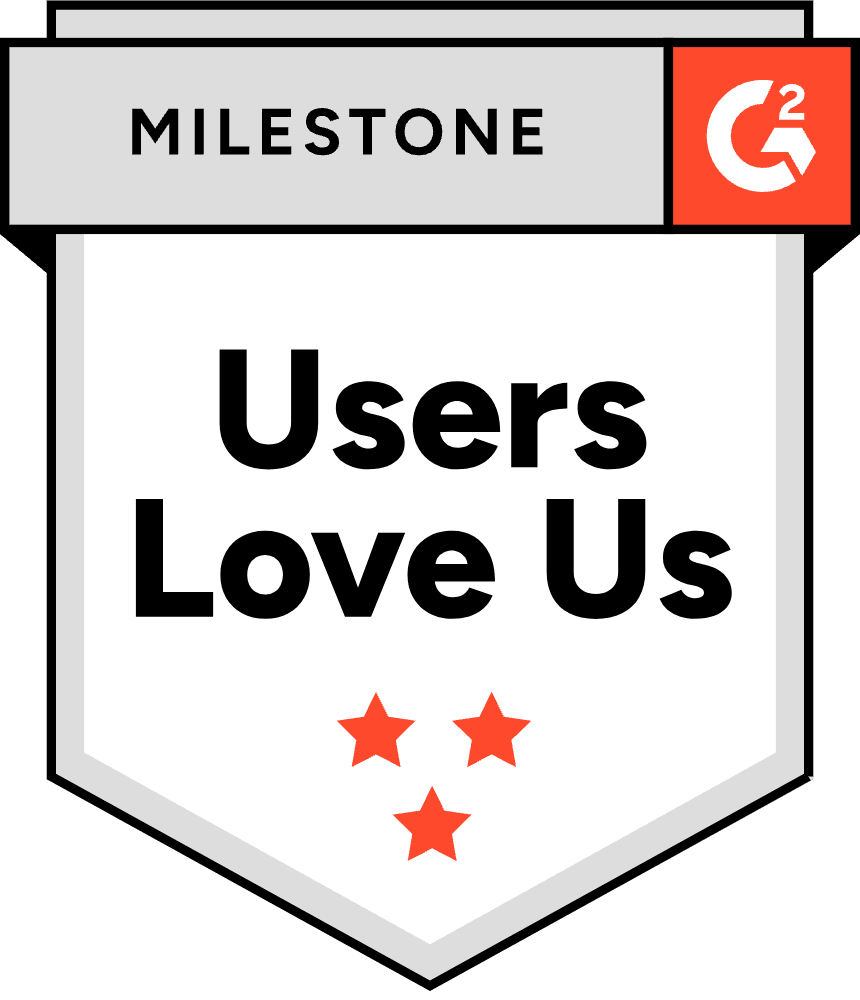In SaaS, when you sign the initial deal, you generally haven't secured more than 30% of the potential revenue with your customer, and your acquisition cost isn't covered yet. Everything that happens after the initial contract is signed thus becomes crucial.
Securing the adoption phase is therefore a crucial element in guaranteeing the success of the customer journey and maximising the impact of your product or service on your customers' businesses.
To achieve this, it is essential to implement five key elements:
- Understanding impact
- Establishing a mutual impact plan
- Setting up a governance process
- Providing ongoing training and support
- Measuring and monitoring success indicators
#1. Understanding Impact
To secure the adoption phase, it is essential to understand the impact of your product or service on your customers' business. This involves assessing both the tangible and intangible benefits your product or service brings and understanding how they translate into business results.
- Rational impact: These are the tangible and measurable benefits your product or service brings to your customer's business, such as improved productivity, reduced costs, increased revenues, and process optimization. To assess the rational impact, it's important to collect quantitative data on how your product or service has improved your customer's business performance.
- Emotional impact: These are the intangible and subjective benefits your product or service brings, such as satisfaction, well-being, confidence, and motivation. To assess emotional impact, it's essential to gather qualitative information on how your product or service has influenced the feelings and experiences of the employees and stakeholders involved.
The rational impact benefits society before the individual, while the emotional impact is the opposite. This means that the rational impact generally does not vary from one person to another in your customer's company, whereas the emotional impact is much more personal and specific to each individual stakeholder.
#2. Etablishing a mutual impact plan
Once you have a clear understanding of the impact of your product or service, it is essential to establish a mutual impact plan with your customer. This can also be referred to as a "Success Plan". This plan should describe the objectives and expectations of each party regarding the adoption of your product or service, as well as the actions and resources needed to achieve them.
- Define measurable objectives: : It's important to establish clear and measurable objectives for the adoption of your product or service, aligned with your customer's business priorities. These objectives should be collaboratively determined with your customer and regularly reviewed to ensure their relevance and achievability.
- Establish expectations of each party : It's crucial to clarify the expectations of each party regarding the adoption of your product or service, delineated according to the different teams involved and each level of responsibility.
- Ensure clear responsibilities: : To successfully implement the mutual impact plan, it's essential to assign clear responsibilities to each party involved. This includes defining the roles and responsibilities of your team and your customer's team, as well as establishing effective communication and coordination mechanisms.
- Allocate necessary resources: : It's also important to ensure that adequate resources are allocated to implement the mutual impact plan. This may involve allocating additional personnel, time, budget, tools, or any other resources necessary to support the adoption of your product or service by your customer.
See also: Top 5 Questions To Ask Your Customers
#3. Setting up a governance process
Putting in place a solid governance process is a key element in securing the adoption phase. This process must include the definition of structures, policies, and procedures that will guide the adoption of your product or service and ensure accountability and transparency throughout the customer journey.
- Set up gouvernance : It is important to establish appropriate governance structures, such as steering committees, working groups, or project teams, which will be responsible for overseeing and managing the adoption of your product or service.
- Document policies and procedures: : It is also essential to develop and document clear policies and procedures for the adoption of your product or service. This can include guidelines on training, support, communication, change management, etc.
- Communicate and engage stakeholders: Communication and stakeholder engagement are key to ensuring the successful adoption of your product or service. It is important to implement effective communication mechanisms to inform and involve all relevant stakeholders throughout the customer journey. It's crucial to continuously share the impact provided, as it may not always be obvious to all stakeholders. Constant efforts must be made to communicate the impact at all levels of the customer's organization and your own.
#4. Providing ongoing training and support
To ensure successful adoption, it is crucial to provide ongoing training and support to your customers throughout the customer journey. This includes not only initial training on how to use your product or service, but also ongoing support to resolve issues, answer questions and help customers get the most out of your product or service.
- Focus on initial training: : It is important to offer in-depth initial training tailored to your customers' needs to familiarize them with your product or service and provide them with the skills and knowledge they need to use it effectively.
- Deepen through ongoing training: : In addition to initial training, it is essential to offer ongoing training to help your customers develop their skills and knowledge as their needs and expectations change. It also allows you to continually onboard new users who may not have benefited from the initial training. This can include additional training sessions, workshops, webinars, Q&A sessions, etc.
- Provide effective online tools and support: It's also important to offer responsive, high-quality support and assistance to resolve issues and answer questions from your customers throughout the customer journey. This may include setting up a help center, a dedicated support department, discussion forums, FAQs, etc. All these channels must be easily accessible and tailored to your customers' needs to provide them with the best possible user experience.
- Supporting change : Adopting your product or service can lead to significant changes in the way your customers work and interact. Therefore, it is essential to implement change management strategies to help them adapt and adopt these changes effectively. This can include communication, training, coaching, and support to facilitate the transition and minimise disruption.
Of course, it is essential to adapt the way in which this support is provided according to the value of your customers' contracts: for low LCA (Lifetime Customer Account) contracts, provide a community response where your customers will be autonomous, while for major accounts, consider dedicating a clearly identified team to them.
#5. Measuring and monitoring success KPIs
Finally, it is important to measure and track success indicators to assess the effectiveness of your product or service and determine whether the objectives and expectations set out in the mutual impact plan are being met. This will enable you to identify areas for improvement and implement corrective actions to optimize the adoption of your product or service and maximise its impact on your customers' business.
Defining the right performance indicators
It is essential to define and monitor the relevant Key Performance Indicators (KPIs) to assess the effectiveness of your product or service and its impact on your customers' business. KPIs can include quantitative indicators such as adoption rate, user satisfaction, productivity, costs, revenues, etc., as well as qualitative indicators such as sentiment, well-being, motivation, etc.
Setting up a Health Score
Customer Health Score is a great way to use patterns to highlight potential risks or opportunities for an account and can be integrated into a Customer Success platform like Skalin. Although the Health Score is not a diagnostic tool, it can assist your teams in identifying which accounts may require special attention and where to seek more information.
You can structure your score around 4 key dimensions:
- Are customers getting the impact they want?
- Are they satisfied with the level of support they receive?
- How committed are your customers to your product?
- Are all the main/essential teams using the product?
Based on these elements, you can define triggers to identify the most common risks and opportunities and systematize the actions to be taken accordingly.
Produce analyses focused on customer needs
It is important to collect, analyze, and present data in a consistent and understandable way to facilitate performance evaluation and decision-making. While it may sound trivial, reports must be tailored to your customers' needs and expectations, including relevant information to help them understand the impact of your product or service on their business. They should be centered around your customer's expectations, something that is all too often overlooked.
Continuous improvement
Measuring and monitoring success indicators is not only important for assessing performance but also for identifying areas for improvement and implementing corrective actions to optimize the uptake of your product or service. It is essential to establish a continuous improvement process that includes analyzing data, implementing corrective actions, reviewing objectives and expectations, and adjusting strategies and plans based on the results obtained.
Conclusion
By implementing these five key elements, you will be able to create a positive customer experience, increase customer satisfaction and loyalty, and improve business outcomes for you and your customers.
It's important to stress that the success of the adoption phase depends not only on the quality of your product or service but also on how you manage and support the adoption process and the relationship you have with your customers throughout the customer journey. By investing in a customer-centric approach and committing to providing high-quality support and assistance, you can not only secure the adoption phase but also build customer trust and loyalty, resulting in long-term benefits for you and your customers.
To achieve this, it's important to keep up to date with market trends, technological developments, and industry best practices and to be ready to adjust and improve your strategies and plans based on customer feedback and results.
To help you better structure all your Customer Success activities, take a look at the complete Customer Success Operating Model offered by Winning by Design (it's free and open access!). For this adoption phase in particular, here are a number of Blueprints to help you structure it.








